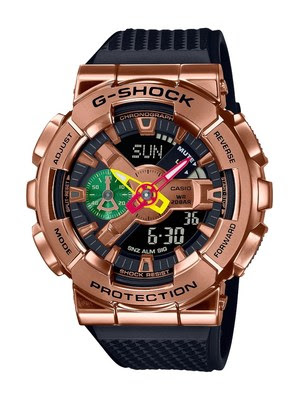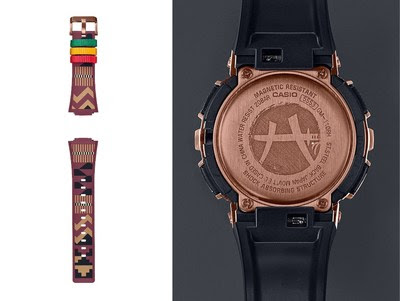China’s global ambitions may have taken a hit in the United States, Europe, Australia, Japan and India, but in Africa, its sustained power and influence are forcing Washington to recalibrate its strategy toward the continent, home to 54 nations.
The United States recently committed $217 million to finance a power plant in Sierra Leone through the U.S. International Development Finance Corporation. When finished, this America-financed power plant will stand alongside eight key government structures China has built for Sierra Leone, including parliamentary offices, army and police headquarters, and the building that houses the West African country’s ministry of foreign affairs.
“It’s overstating to say that the continent has largely been taken over by China, though my assessment is that Beijing is the most influential foreign actor on the continent,” says Joshua Meservey, senior analyst for Africa and the Middle East at the Heritage Foundation.
“China does dominate certain important sectors,” Meservey told VOA, listing construction and telecoms among those sectors. But, he said, “the U.S. is still influential.”
In a study published in December 2020, Meservey presented a list of 186 government buildings that Chinese companies have built in Africa in recent years, many of which house parliamentary offices, presidential palaces, ministries of foreign affairs and military facilities. Beijing has also built more than a dozen intra-governmental telecommunication networks on the continent, Meservey noted.
While Washington has persuaded some allies to keep Chinese telecom giant Huawei out of their 5G networks, the company is working on 25 projects in Africa, having already carved out 70% of the continent’s 4G network and primed itself for the next step.
In June, the president of Senegal instructed his government to “rapidly repatriate all national data hosted out of the country” to a state data center built by Huawei.
“If you look at the Belt and Road, 50 African countries have signed up. That makes Africa the biggest bloc within China’s Belt and Road Initiative (BRI),” said Paul Nantulya, a research associate at the U.S. National Defense University’s Africa Studies Center, in a phone interview with VOA.
“The question then becomes, how does United States compete with China [on the African continent]?”
According to studies done by the China Africa Research Initiative based at Johns Hopkins University, Chinese foreign direct investment to Africa has been increasing steadily since 2003 and surpassed that of the U.S. in 2014. U.S. FDI to Africa has been declining since 2010, according to data collected by the group.
To beef up the U.S. overseas presence in the face of competition from China, a growing number of American thought leaders are calling for the government to rethink its role in strengthening U.S. corporate and strategic interests abroad.
“The genius, if you will, of the Chinese economic system is that they are working to align the company interest and the state interest together,” said Robert D. Atkinson, an economist who has served in both Democratic and Republican administrations. “What the Chinese have that we don’t is they have a strongly held view that certain industries are more important than others.”
Given that the Chinese government pours “massive subsidies” into these strategic sectors to fund its global expansion, Atkinson believes Washington could fight back by increasing foreign aid and backing private companies’ strategic ventures abroad.
“Does that mean we do everything China does? Of course not,” he said. The U.S. government should avoid “over-involvement,” he added, but “continuing what we have been doing is clearly not enough.”
Atkinson, who heads the Washington-based Information Technology and Innovation Foundation, believes there is a middle ground.
“The whole notion that we shouldn’t have our own national industrial policy – that’s an idea that only works if you’re not facing a competitor like China; the reality is, we are facing a competitor like China,” he said. “We can either get China to change – that’s not going to happen, we tried and failed – or we can adapt our own policies.”
Scott Morris, a senior fellow at the Center for Global Development, told VOA the aggregate U.S. foreign aid budget directed toward Africa “is around 25 to 30 billion dollars a year,” a figure he said “certainly rivals Chinese lending.”
But, he said, most of the U.S. aid goes to global health programs, disease eradication and humanitarian assistance. He also acknowledged that a significant portion of the U.S. foreign aid budget goes toward multilateral institutional lending and developmental agencies, such as the World Bank.
“Where we clearly see a difference is that China is very concentrated in the very area the U.S. is largely absent, and that is [country-to-country] infrastructure financing,” Morris said. “Allowing China to finance and/or control much of the enabling infrastructure in key sectors could harm U.S. prospects in Africa going forward.”
Nantulya thinks that America could benefit from a reevaluation of what the continent means for the United States.
“Do we view Africa as a partner? Do we view Africa as a place that generates security threats that must be met with military force? Or do we view Africa as a place that, yes, has its security problems, but where strategic opportunities outweigh security risks?”
While questions linger on the American side, he said, Beijing made up its mind what Africa means for its strategic aims long ago.
Nantulya said China’s official foreign policy doctrine casts big powers as the key, neighboring countries as the priority, developing countries as “the foundation” and “multilateral platforms as the stage.”
Cast in this light, Africa is a continent where China sees “tremendous opportunities in spite of risks” and has no doubt seized upon those opportunities in political, economic and military areas alike, Nantulya told VOA.
Ultimately, the challenge that China represents is “first and foremost ideological,” he said, and that this is where the United States has an opening to compete with Beijing on a continent where China is now widely regarded the most influential foreign power.
“Values matter; Africans are fighting for and championing the values that have also guided the American experiment and the American story,” said Nantulya, a native of Tanzania who studied in Kenya and South Africa and worked across the continent before moving to the United States.
He hopes that Americans can understand that the two sides have a shared future and look at the relationship as an opportunity, rather than one where the United States is constantly coming in to put out fires.
Source: Voice of America






